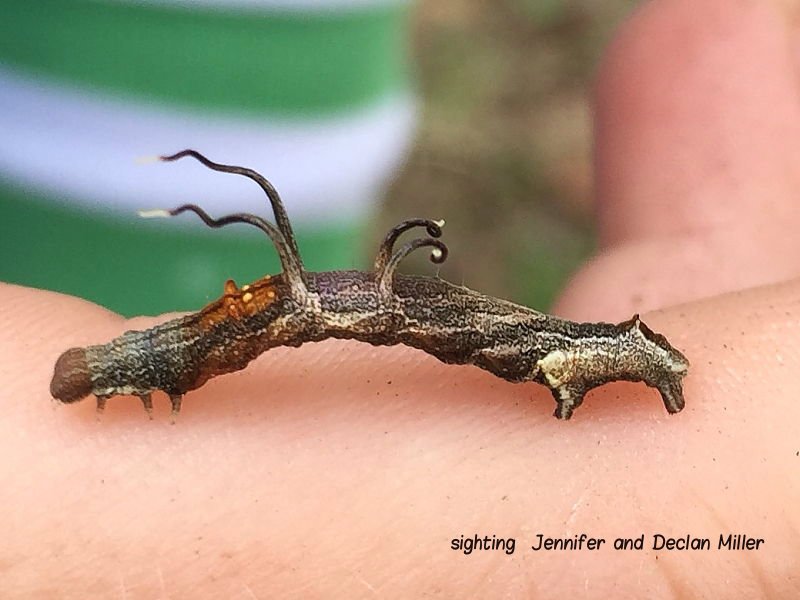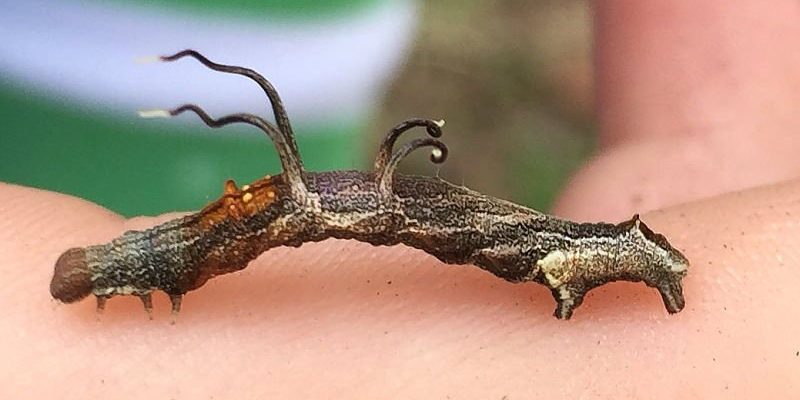
Inchworms are the larval form of moths that belong to the Geometridae family. The name “inchworm” comes from their unique method of moving, where they seem to inch along by contracting and extending their bodies. But while they’re busy doing that, they’re also busy growing. So, how long do they remain in this stage before transforming into beautiful moths? Let’s dig into the details together and find out!
What Exactly Are Inchworms?
Before we dive into the lifespan of inchworms, it’s good to clear up exactly what they are. Inchworms are the caterpillar stage of various moth species, primarily those in the Geometridae family. They’re often green or brown, helping them blend in with leaves and branches. This camouflage is crucial for avoiding predators since their primary defense is to remain unnoticed.
You might be wondering how they get their name. It’s all about their unique way of crawling. When they move, they mimic the motion of inching—contracting their bodies and then extending forward. It’s a slow, deliberate movement that makes them look like they’re measuring the ground as they go. Pretty clever, right?
The Life Cycle of Inchworms
Inchworms go through a fascinating life cycle, typically made up of four stages: egg, larva (inchworm), pupa, and adult moth. After mating, female moths lay their eggs on the leaves of trees or plants. Once the eggs hatch, the inchworm emerges and begins its larval life.
In this larval stage, inchworms primarily focus on eating and growing. They’ll munch on leaves and other plant material to gather the energy they need for their transformation. This is when their growth is most significant, and they can sometimes be seen in large numbers, especially in the spring and summer months.
How Long Do Inchworms Stay in the Larval Stage?
Now, let’s get to the heart of the matter: how long do inchworms stay in this larval stage? Typically, they remain in this stage for around **three to six weeks**. However, this can depend on several factors, including environmental conditions, food availability, and the specific species of inchworm.
During this period, inchworms will molt several times, shedding their skin as they grow. Each time they shed, they become a bit bigger and stronger. So, if you see inchworms hanging around your garden, they’re likely in the midst of this critical growth phase!
Factors Affecting Larval Duration
The duration of the larval stage can vary due to a few key factors. Let’s break them down:
- Temperature: Inchworms are ectothermic, meaning their body temperature is affected by their environment. Warmer temperatures can speed up their growth while cooler temperatures can extend their larval stage.
- Food Availability: If food is abundant, inchworms will grow more quickly and may complete their larval stage sooner. If food is scarce, they might take a longer time to develop.
- Species Variations: Different species of inchworms have different growth rates. Some might develop faster than others based on their specific life strategies and environments.
Understanding these factors helps us see why the duration isn’t fixed. It’s all about adaptation!
The Importance of the Larval Stage
So why does the larval stage matter? For inchworms, it’s where they do the bulk of their growing. This is when they build up the energy reserves they need to transform into adult moths. The entire larval phase is crucial for their survival and successful maturation.
Moreover, inchworms play an important role in the ecosystem. As they munch on leaves, they contribute to plant growth by promoting new foliage. They also serve as food for a variety of predators, like birds and small mammals. In other words, their time as a larva isn’t just about them—it has ripple effects throughout their environment.
What Happens After the Larval Stage?
Once inchworms have completed their larval phase, they move on to the next stage: pupation. During pupation, they typically find a safe spot, often on a branch or leaf, and form a protective cocoon or chrysalis. It’s during this time that they undergo the magic of metamorphosis, transforming into adult moths.
This stage can last anywhere from a few weeks to several months, depending on the species and environmental conditions. After emerging as adult moths, they’ll eventually seek mates and lay eggs, continuing the cycle all over again.
Common Questions About Inchworms
You might have some questions about inchworms and their life cycle. Here are a couple of quick answers:
- Do inchworms harm plants? Generally, they may cause some damage to leaves, but their impact usually isn’t severe. Their presence can actually promote new growth.
- Can inchworms become pests? In smaller numbers, they usually aren’t a problem, but if their population spikes, they can cause noticeable damage to gardens and landscapes.
Understanding these points can help gardeners make informed decisions about how to manage inchworm populations.
Wrapping Up: The Fascinating World of Inchworms
Inchworms are more than just quirky little creatures that inch along. Their larval stage is a vital part of their life cycle, lasting about **three to six weeks**. They play significant roles in their ecosystems, supporting plant health and serving as food for various animals.
So next time you spot an inchworm, take a moment to appreciate not just its movement, but the fascinating life stage it represents. These little guys are continuously contributing to the circle of life in a way that’s both essential and magical. Whether you’re a gardener hoping for a fleeting glimpse of wildlife or just curious about nature, inchworms are a reminder of the complexity and beauty of the natural world.

